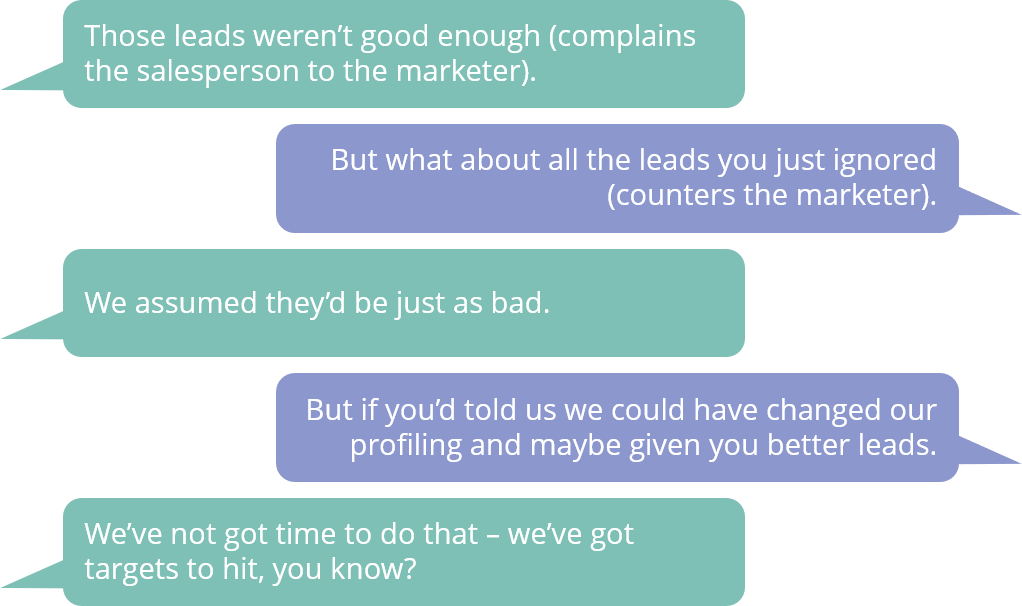Get a quick quote with our pricing calculator
Aligning Sales & Marketing for Business Success
 Sound familiar? It’s the sort of dispute that simmers away between marketing and sales functions in organisations the world over. It’s frustrating for all involved, and it results in significant lost opportunity for the organisations: a 2015 survey from Gleanster found that of organisations lacking alignment between sales and marketing just 37% reach revenue goals and a mere 7% exceed them. This compares to 56% and 19% for aligned organisations.
Sound familiar? It’s the sort of dispute that simmers away between marketing and sales functions in organisations the world over. It’s frustrating for all involved, and it results in significant lost opportunity for the organisations: a 2015 survey from Gleanster found that of organisations lacking alignment between sales and marketing just 37% reach revenue goals and a mere 7% exceed them. This compares to 56% and 19% for aligned organisations.
There is then significant incentive at most organisations to achieve greater alignment between sales and marketing, and so in our latest white paper “Aligning Sales and Marketing”, we map out the specific, concrete steps that an organisation can take to achieve this goal.
It shows readers the importance of gaining senior executive buy-in and offers advice on how to achieve that. It details how to map out the entire sales and marketing pipeline, so that all involved understand what others are doing, and how their role fits into the attainment of overall goals. It gives useful pointers on how to achieve the sort of open, constructive communication that is the bedrock of any successful relationship. The end result ought to be shared goals, performance targets and metrics, and the white paper explains how to agree these and crucially how to document and then measure the agreement.
At some stage in this process, most organisations reach a realisation that their sales and marketing process is more complex than they expected. In fact, it is this complexity which often lies at the root of misalignment, and working through it is what brings the functions together. But most organisations realise they can only do it by investing in a CRM platform.
This CRM platform pulls in information from across the business and presents it back to salespeople and marketers in easy-to-understand, real-time dashboards and reports. These allow salespeople and marketers to easily see the sales pipeline, allocate tasks between departments, and make any changes needed to marketing and sales campaigns. By doing this it becomes the tool that maintains alignment between sales and marketing.
It is not unusual for sales and marketing functions to misunderstand each other. It is very common. But it is frustrating for the people involved and inefficient for the organisation. It is also unnecessary. If your organisation is one of the many where salespeople and marketers are finding themselves having those sorts of disagreements then take action now – download the white paper and take the first step to aligning your organisation for success.